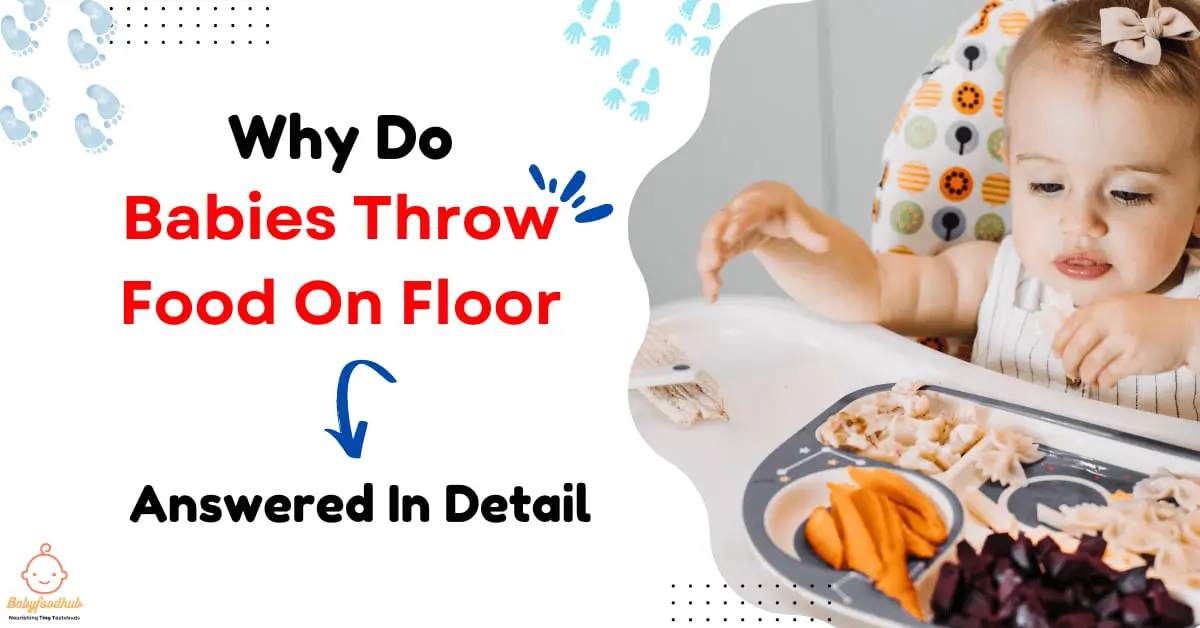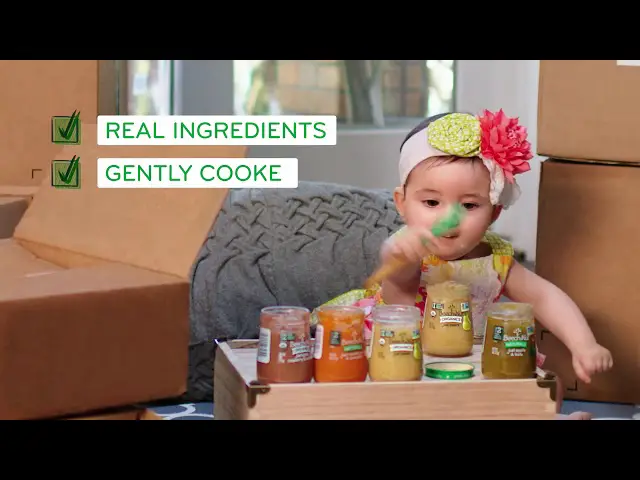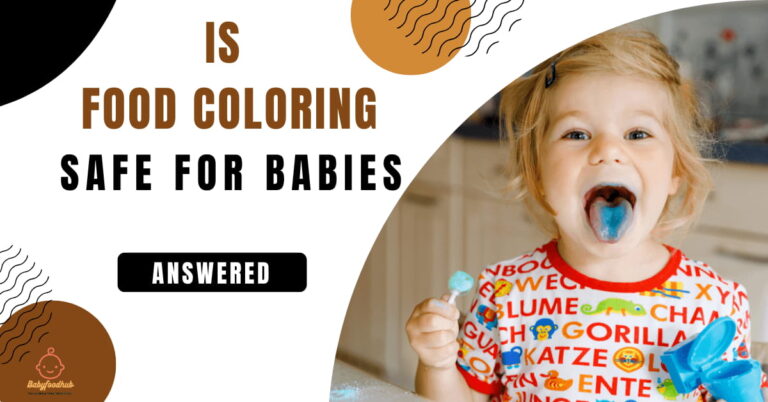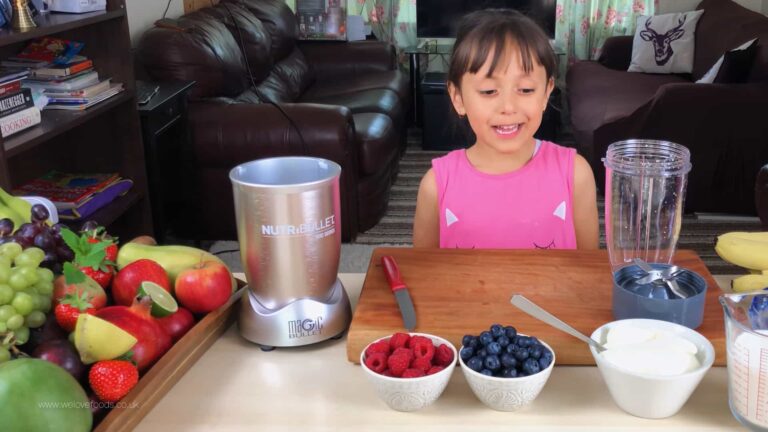why do babies throw food on the floor?
Babies often throw food on the floor as a way to explore their environment and communicate. This behavior is a normal part of their development, expressing curiosity and learning cause and effect.
Have you ever watched a baby during mealtime and seen them toss their peas or cereal right onto the floor? It’s something almost all babies do. You might wonder why they enjoy this messy game. It turns out, that when babies throw their food, they’re not just making a mess; they’re learning and growing. You see, for babies, mealtime is not just about eating. It’s also a time for them to explore and understand the world around them. When they grab their food and throw it away, they’re not only testing how things like gravity work (like why things fall down and not up), but they’re also learning about different shapes, sizes, and textures. It feels like play to them, but it’s a serious part of their learning.
Understanding why babies throw food can help moms, dads, and caregivers a lot. It reminds us that what might look like just making a mess is a key part of a baby’s development. This behavior is one of the many ways babies discover how the world works. Knowing this, parents can find clever and patient ways to teach their little ones about mealtime manners, while still allowing them room to explore and learn. So, next time you see food flying off the highchair, remember, that it’s all part of how babies grow and understand their world!
Developmental Milestones
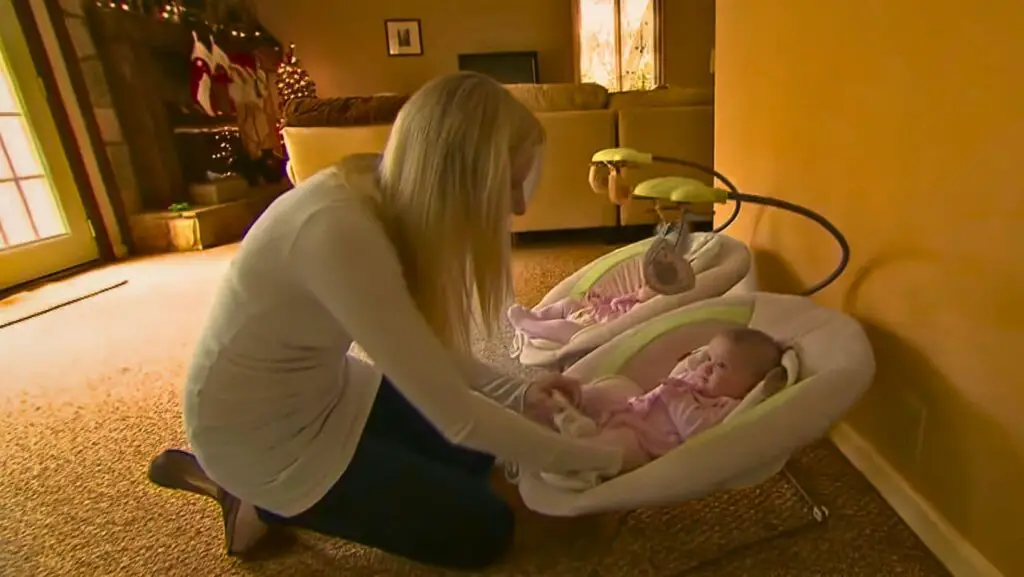
If you’ve ever watched a baby in action, it’s clear: mealtime is more than just eating. It’s a space for learning and growth. As babies grow, they reach new ‘Developmental Milestones’. Tossing a fistful of cereal to the floor isn’t just mischief; it’s a sign of growing skills. Let’s delve into two crucial areas in a baby’s growth linked to this behavior.
Motor Skills Development
Babies learn by doing. The act of picking up food and figuring out where it goes is no small feat. It’s about mastering hand-eye coordination and fine motor skills. These are skills like grasping, releasing, and aiming. When food hits the floor, it’s proof of practice. Progress, sometimes messy, is sure to follow. Here’s how this looks in action:
- Grasping: Fingers hug a carrot stick.
- Releasing: A gentle drop or a fling.
- Aiming: Working on hitting a target.
Exploration And Sensory Development
Babies explore with all their senses. Touching and tasting are part of learning. They squish bananas and smack noodles. The textures and sounds are fascinating. It’s all about discovery. Sensory experiences shape brain pathways. They help us understand the world. Here are three sensory experiences vital to development:
| Sense | Developmental Role |
| Touch | Feeling food textures promotes tactile learning. |
| Sound | The clatter of a spoon can be interesting. |
| Sight | Watching food fall and scatter teaches cause and effect. |
Understanding The Behavior
Babies throw food on the floor, and while it can be frustrating, it’s a natural part of their development. This behavior is not just random; it has reasons rooted in learning and communication. Let’s explore the various motives behind why your adorable little one might be creating such a mess at mealtime.
Sensory Exploration And Curiosity
Babies learn about the world through their senses. When food gets tossed, it’s often a discovery exercise. They are feeling textures, watching what happens when objects fall, and listening to the sounds they make. This sensory play is crucial for their cognitive growth.
- Texture and shape exploration
- Understanding gravity and cause-effect
- Engaging with their environment
Seeking Attention And Reaction
Another reason for food flinging is the desire for interaction. Babies often seek your gaze or smile as they drop food. This is a social experiment where they learn about attention and response from those around them.
- They drop food to see if you’ll pick it up
- They gauge responses to their actions
- Moments for bonding and learning social cues
Communicating Preferences
Tossed broccoli isn’t just a mess; it’s a message. Your infant might be showing you what they don’t like to eat. It’s a basic way of communication. Pay attention to patterns, as it helps in understanding their preferences.
| Food Type | Reaction |
| Vegetables | Often thrown |
| Fruits | Sometimes eaten |
| Cheese | Rarely thrown |
Factors Influencing Food Throwing
Babies throwing food on the floor can be a messy, yet common phase. Let’s explore why this happens. Various factors contribute to this behavior. Understanding them helps parents manage mealtimes better.
Stage Of Development
Babies are natural explorers. As they grow, they learn about the world around them through their senses. When it comes to food, the action of throwing helps them understand cause and effect. “If I drop this, it falls.” This is a critical learning phase. Frustrating for adults, it’s essential for babies.
Personality And Temperament
Each baby is unique. Some are calm and content, others more energetic. A baby’s personality influences mealtime behaviors. Active little ones might throw food as a way to express themselves or to seek attention. Temperament matters.
Parental Reactions
How parents react to food throwing affects how often it happens. Laughing or a stressed response can unintentionally encourage the behavior. Parents need to remain calm and consistent. Positive reinforcement can guide babies towards better mealtime habits.
| Factor | Description | Impact |
| Development | Learning cause and effect | High |
| Personality | Expression of self | Variable |
| Parental Response | Guidance from reactions | Significant |
- Explore textures and effects – Babies discover through touch and reaction.
- Communicate needs – Throwing can be a sign of fullness or a desire for interaction.
- Model behavior – Calm and consistent parenting teaches acceptable behavior.
Strategies To Address The Behavior
Parents often wonder why their little ones throw food on the floor. It’s a behavior that can seem baffling and frustrating. Yet, with the right strategies, this common phase of a baby’s development can be managed effectively. Let’s explore some tactics to help guide your baby away from turning mealtime into playtime.
Setting Clear Expectations
Toddlers thrive on clear and consistent rules. Establishing expectations at the dining table is crucial. When babies understand what is expected of them, they’re more likely to follow suit. Start by calmly explaining that food is for eating, not throwing. Use simple language and repeat the rules often. Use visuals, like a no-throwing sign, to remind them.
Providing Alternative Sensory Experiences
Throwing food is often an exploration of textures and cause-and-effect. Offer opportunities for your baby to engage in sensory play away from mealtime. Let them play with squishy toys, rice, or water. These activities can satisfy their curiosity and reduce food-flinging episodes. Below is a list of sensory play ideas:
- Playdough time: Building and molding.
- Water play: Splashing and pouring exercises.
- Sandbox exploration: Digging and castle-making.
Using Positive Reinforcement
Praise works wonders with babies. Applaud your baby when they eat without making a mess. Offer claps and encouraging words. This reinforcement makes them want to repeat the good behavior. Consider a simple reward system with stickers for a meal without mishaps. But be sure the focus is on positive actions, not the negatives.
Mealtime Environment

The Mealtime Environment plays a crucial role in shaping your baby’s eating habits. A well-structured setting can minimize food-throwing incidents. Let’s explore how creating calm surroundings and maintaining consistency can transform mealtimes for both you and your baby.
Creating A Calm And Structured Setting
Calmness and structure during mealtime send clear signals to your baby. These signals tell them it’s time to eat, not play. To achieve this:
- Ensure the dining area is free from distractions like loud TV shows or toys.
- Use a highchair that is stable and comfortable.
- Keep the table setting simple to avoid overwhelming your baby.
With a tranquil environment, your baby can focus on their food. This focus may reduce the urge to throw it.
Consistency In Mealtime Routines
Consistency helps your baby learn what to expect at mealtimes. Stick to a routine with these steps:
- Schedule meals around the same time each day.
- Encourage eating at the table, not while roaming around.
- Model good behavior by eating alongside your baby.
This consistent approach teaches your baby that mealtime has a specific start and end. It can make food throwing less likely.
Parental Attitudes And Reactions
Understanding why babies throw food can test a parent’s patience. Yet, how parents react shapes a child’s behavior. Calm responses and clear boundaries are key. Let’s explore parental strategies that help.
Avoiding Power Struggles
Babies love testing limits. It’s how they learn. A thrown carrot might feel like a challenge. But, it’s not about winning for them.
- Acknowledge their exploration but set clear rules.
- Stay calm to avoid escalating the situation.
- Distractions work better than a direct face-off.
Using redirection can steer meals back on track. Ignore the thrown food. Offer toys instead. It helps to prevent a battle of wills.
Modeling Appropriate Behavior
Kids imitate their parents. Your actions teach them. Eating together shows them how mealtime works.
- Show how to keep food on the plate.
- Use positive words like “we eat food” and “food stays here.”
- Praise when they dine without a mess.
Eat with your child often. It gives them a living example to follow. Children learn best by watching.
Dealing With Food Throwing In Public
Mealtime with babies can turn into a messy affair, especially in public places. The habit of throwing food on the floor can be challenging for parents. Dealing with food throwing requires patience and strategy.
Practical Tips For Outings
Be prepared for inevitable messes with these practical tips:
- Choose kid-friendly venues: Select places with easy-to-clean floors and a relaxed atmosphere.
- Bring distractions: Small toys or books can keep little hands busy.
- Pack cleanup supplies: Wet wipes and bibs are essential for quick cleanups.
- Feed before you leave: If kids aren’t hungry, they’re less likely to throw food.
- Order wisely: Simple, easy-to-eat foods minimize the mess.
- Practice at home: Reinforce good table manners before you head out.
These tips can help keep food on the table and off the floor.
Responding To Public Reactions
Dealing with onlookers when your baby throws food can add stress. Here’s how to handle it:
- Stay calm: Your composure affects your child and signals confidence to others.
- Apologize if necessary: A simple sorry to nearby diners can go a long way.
- Don’t mind the stares: Most people understand that babies can be unpredictable.
- Focus on your child: Redirect their behavior, and don’t worry too much about the crowd.
- Communicate with staff: They’re there to help and often have experience with kids.
Remember, many have been in your shoes, and a little empathy goes a long way.
When To Seek Professional Help
Watching your little one toss their meals onto the floor can be frustrating. It’s often a normal part of their development. But sometimes, this behavior might hint at underlying issues. Recognize when it’s more than just a phase. It’s time to act when persistent concerns are impacting your child’s growth. Seek professional guidance to navigate these choppy waters. Here, we’ll explore signs indicating the time for professional help.
Persistent And Extreme Behavior
Is your baby’s food-flinging turning into a non-stop event? This might cause worry. A baby that continuously shows extreme behavior might need extra support. Look for signs of:
- Constant tantrums when feeding,
- Rejection of various foods, or
- No reduction in food throwing over time.
Behavior that’s not changing could mean something else is happening. It’s wise to consult with a pediatrician or a specialist.
Concerns About Development
Throwing food isn’t always just for play. Sometimes, it’s a sign of developmental concerns. Pay attention to:
- Difficulty with fine motor skills,
- Lack of eye-hand coordination,
- Struggle with chewing or swallowing.
If your baby shows these signs, it may be more than just a messy eating phase. This behavior might indicate a need for an evaluation by a professional. Child development experts or occupational therapists can assess and create a support plan.
| Signs | Possible Measures |
| Persistent throwing | Consult Pediatrician |
| Extreme reactions | Professional Evaluation |
| Developmental delays | Occupational Therapy |
Keep observations to share with healthcare providers. They inform the assessment greatly. Partner with experts in your child’s health journey. They can help you understand and manage food-throwing behaviors effectively.
Always ensure to review and edit your HTML content for compliance with your specific web platform’s requirements before publishing.
Sharing Experiences And Advice From Other Parents
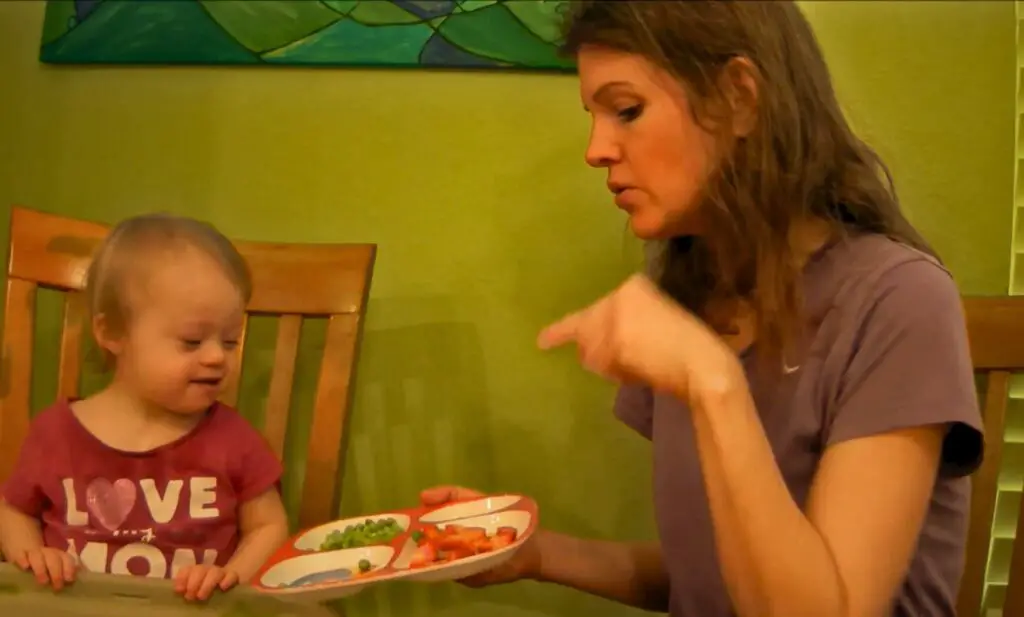
Welcome to the ‘Sharing Experiences and Advice from Other Parents’ section of our blog. We delve into the messy yet common phase of parenthood where little ones love to send their food flying off the highchair. This shared journey involves tips and tales from various parents who have navigated the food-throwing stage. Read on for reassurance and practical advice to get through this developmental milestone with your sanity intact.
Anecdotes And Tips From Other Parents On Handling This Phase
Parents know the struggle firsthand when mealtime turns messy. Throwing food is a typical part of child development, but it doesn’t make cleanup any easier. Here’s what some parents suggest:
- Stay calm and don’t react with laughter or anger, as it may encourage them to continue.
- Create a gentle but firm consequence like the end of mealtime.
- Use diverting tactics like switching to finger foods or changing the setting.
- Praise good behavior at the table to reinforce the positives.
| Parent | Useful Tip |
| Emily R. | Introduced a ‘no throwing’ sign. |
| Luke P. | Gave the child a plastic plate to drop instead. |
| Jasmine S. | Turned cleanup into a game with her toddler. |
Encouraging Community Support And Sharing Solutions
Connecting with other parents plays a crucial role in handling challenges like food-throwing. Here’s how our community can help:
- Join online forums for parenting insights and encouragement.
- Engage in local parent-and-child groups to share strategies.
- Consider sharing funny and relatable stories to lighten the mood.
Remember, this phase is temporary. With shared stories and tips, you’ll find an approach that works for your family. Stay patient and embrace the process!
Frequently Asked Questions For Why Do Babies Throw Food On The Floor?
Is It Normal For Babies To Throw Food On The Floor?
Yes, it’s common for babies to throw food on the floor. This behavior is part of how they explore their environment and develop motor skills.
Why Does My Baby Put Food On The Floor Before Eating?
Babies often explore textures and practice hand-eye coordination by moving food onto the floor before eating. It’s a normal developmental stage.
Why Do Babies Throw Things On The Floor?
Babies often throw things on the floor to explore gravity and cause-and-effect relationships. This behavior also gets attention and can be a form of communication or play for them.
What Age Do Babies Stop Throwing Food?
Babies typically stop throwing food by the age of 18 months to 3 years as they develop better motor skills and manners.
Conclusion
Understanding the motives behind your baby’s food-flinging habits can help ease mealtime chaos. As they grow and explore, this behavior is often a natural phase of development. Embracing this period with patience and gentle guidance will lead to less food on the floor and more in those tiny tummies.
Keep mealtimes positive, and remember, this too shall pass.

